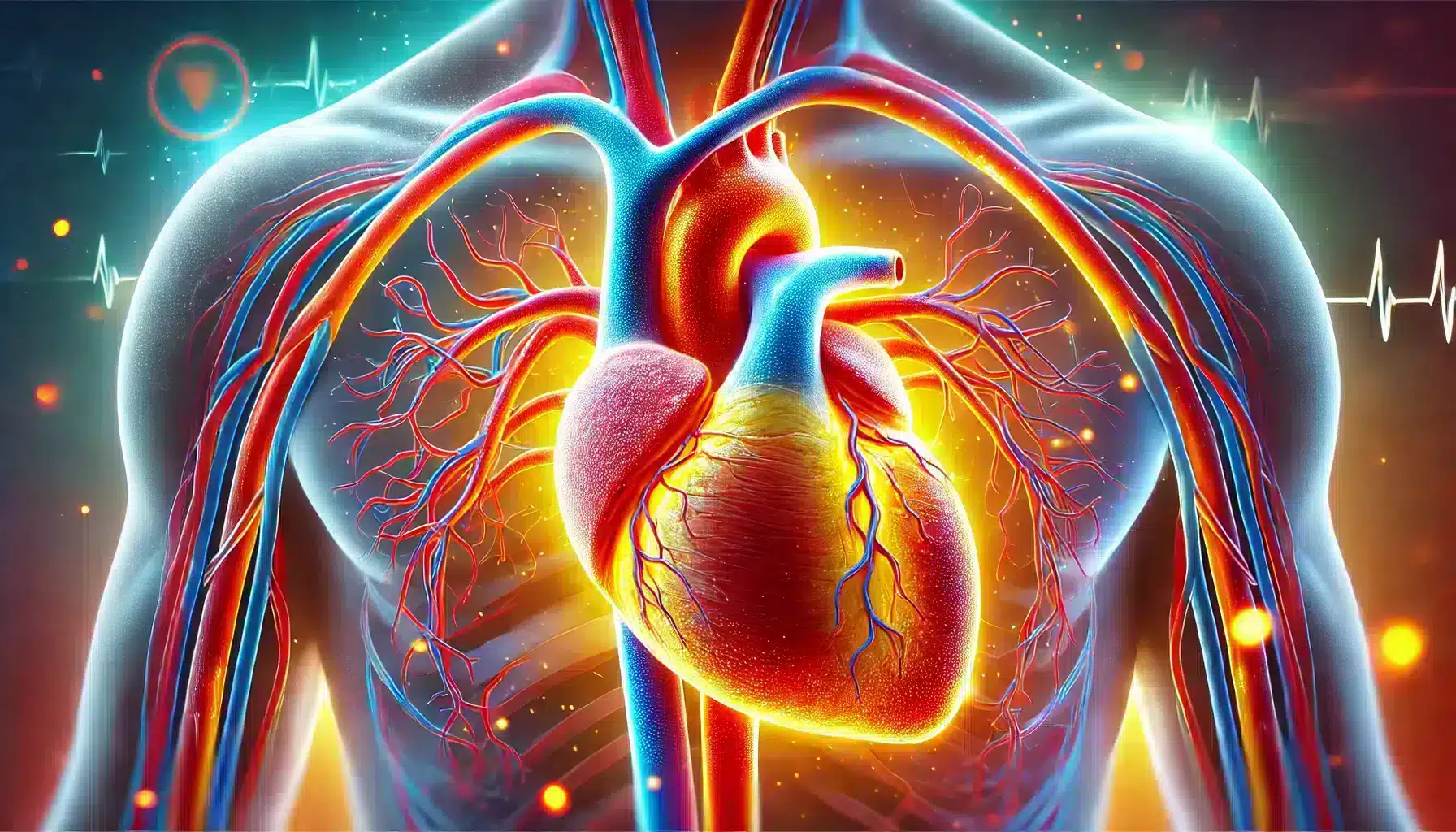What Is Coronary Artery Disease?
Coronary artery disease (CAD) is one of the most common heart conditions, and it occurs when the arteries that supply blood to the heart muscle become narrowed or blocked due to the buildup of fatty deposits called plaque. These blockages can reduce or completely stop blood flow to the heart, leading to chest pain, shortness of breath, and, in severe cases, heart attacks. CAD doesn’t develop overnight; it typically takes years to progress, often without noticeable symptoms in its early stages. This is why it’s often referred to as a silent condition.
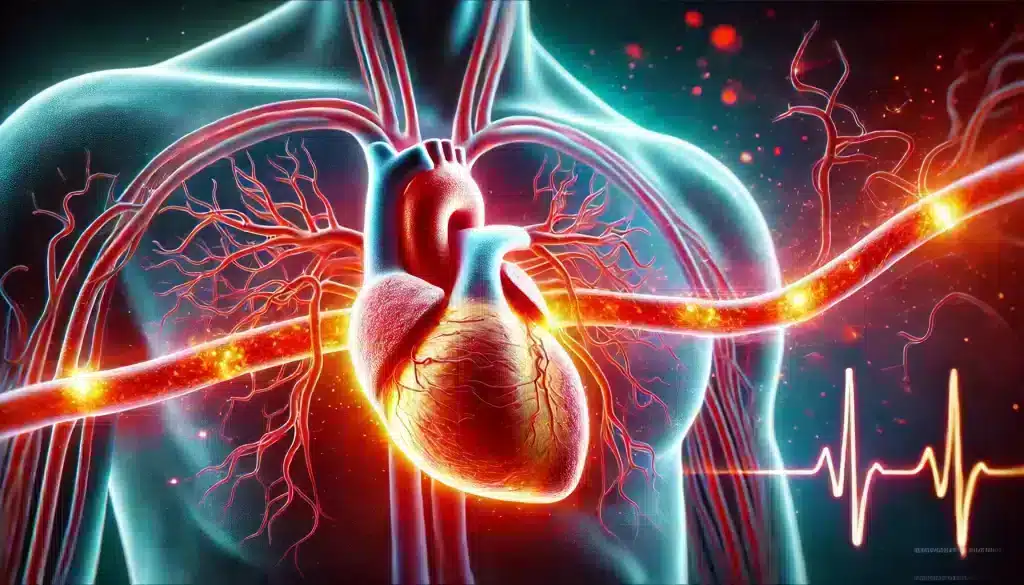
Imagine a garden hose. Over time, dirt and debris can accumulate inside, reducing water flow. Similarly, plaque builds up inside the arteries, limiting the flow of oxygen-rich blood to the heart. In many cases, people don’t even realize their heart is under stress until they experience a major event like a heart attack. However, the good news is that understanding the causes and risk factors can help in early diagnosis and prevention.
How Plaque Buildup Affects Arteries
The gradual buildup of plaque inside the arteries can cause them to harden and narrow over time, a process known as atherosclerosis. This reduces blood flow to the heart muscle, making it harder for the heart to get the oxygen it needs. A lack of oxygen can lead to symptoms like chest pain (angina), especially during physical activity or stress when the heart demands more oxygen. In severe cases, plaque can rupture, causing a blood clot to form, which can lead to a heart attack.
It’s important to note that not all plaque buildup will cause immediate problems, but over time, it increases the likelihood of a life-threatening event if left unchecked. That’s why regular checkups and monitoring are crucial for individuals at risk of CAD.
The Importance of Early Detection
Early detection of CAD can make a significant difference in outcomes. Many people are diagnosed only after experiencing severe symptoms like a heart attack, but there are diagnostic tests available to detect the disease earlier. These include stress tests, electrocardiograms (EKGs), and coronary angiograms. Early intervention can involve lifestyle changes, medications, or procedures to improve blood flow and prevent further artery damage.
By catching the disease early, individuals can take proactive steps to reduce their risk, including managing their cholesterol, exercising regularly, and avoiding smoking. Prevention and early treatment are key to minimizing the damage caused by coronary artery disease.
Causes and Risk Factors of Coronary Artery Disease
Coronary artery disease (CAD) develops gradually over time due to a combination of genetic factors and lifestyle choices. The most common cause of CAD is atherosclerosis, a condition where fatty deposits, or plaque, accumulate on the walls of the arteries, causing them to narrow and restrict blood flow. This process can be triggered by a number of risk factors, both controllable and uncontrollable, that increase your likelihood of developing the disease.
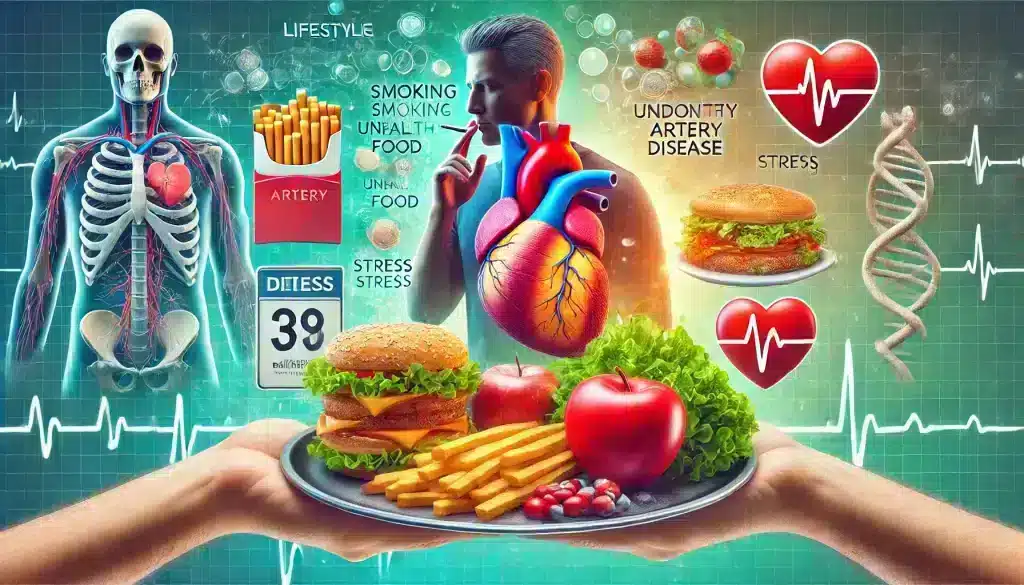
Understanding the risk factors associated with coronary artery disease is crucial in taking steps to prevent its progression. While some risk factors like family history and age cannot be changed, others, such as smoking and diet, are within your control. By making heart-healthy choices, you can reduce the likelihood of developing coronary artery disease.
Major Risk Factors for Coronary Artery Disease
- Smoking: One of the most significant risk factors, smoking damages the lining of your arteries, leading to plaque buildup and a higher risk of heart attacks.
- High cholesterol: Elevated levels of LDL cholesterol (“bad cholesterol”) in your blood can contribute to the formation of plaque, increasing your risk of CAD.
- High blood pressure: Hypertension causes additional strain on your artery walls, making it easier for plaque to build up and narrow the arteries.
- Diabetes: People with diabetes are at a higher risk of coronary artery disease because high blood sugar levels can damage blood vessels over time.
- Obesity: Excess weight often correlates with high cholesterol, hypertension, and diabetes, all of which increase the risk of CAD.
Non-Modifiable Risk Factors
While you can take steps to address lifestyle-related factors, some risk factors for coronary artery disease are beyond your control. These include:
- Family history: If you have a close relative who has been diagnosed with CAD, your risk of developing the condition increases.
- Age: As you age, your risk of developing CAD rises. Men aged 45 and older and women aged 55 and older are more at risk.
- Gender: Men are generally at a higher risk for CAD at a younger age, although the risk for women increases after menopause.
Risk Factor Table
Below is a table summarizing the key modifiable and non-modifiable risk factors for coronary artery disease:
| Modifiable Risk Factors | Non-Modifiable Risk Factors |
|---|---|
| Smoking | Family History |
| High Cholesterol | Age |
| High Blood Pressure | Gender |
| Diabetes | |
| Obesity |
By identifying which risk factors apply to you, especially those you can control, you can take action to reduce your risk of coronary artery disease. Lifestyle changes such as quitting smoking, eating a balanced diet, and maintaining a healthy weight can go a long way in preventing the development of coronary artery disease. It’s also important to work with your healthcare provider to monitor and manage other conditions like high blood pressure, high cholesterol, and diabetes.
Early Symptoms of Coronary Artery Disease
Recognizing the early symptoms of coronary artery disease (CAD) is critical for timely intervention and preventing serious complications like heart attacks. Many people may not experience noticeable symptoms in the early stages of CAD, which is why it’s often referred to as a “silent killer.” However, when symptoms do appear, they can vary from mild to severe and often worsen with time if left untreated.
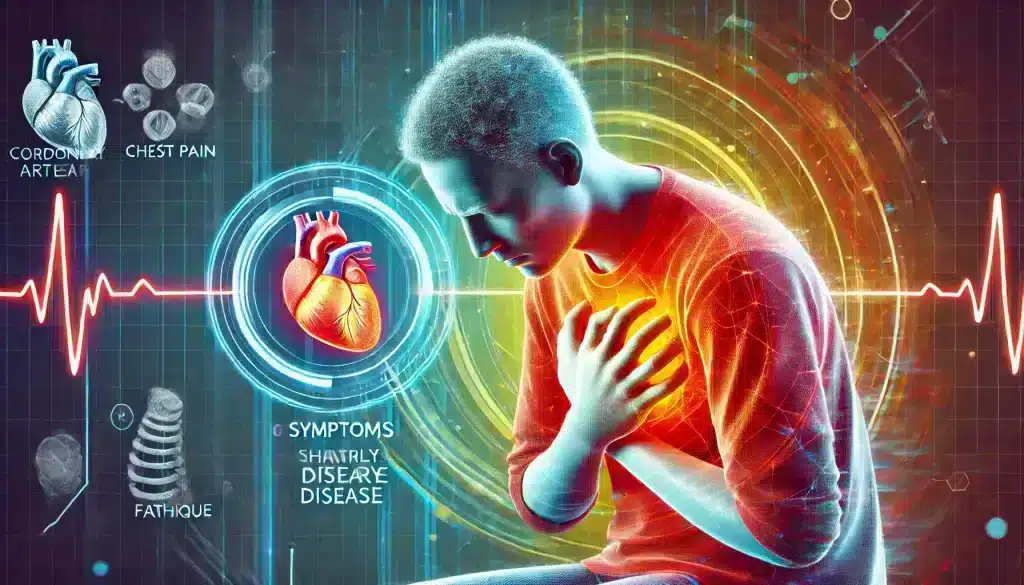
One of the most common early signs of coronary artery disease is chest discomfort, also known as angina. This discomfort can feel like pressure, squeezing, or fullness in the chest. It’s typically triggered by physical exertion or emotional stress and may subside with rest. Other early warning signs may be less obvious but equally important to recognize, including shortness of breath, fatigue, and even nausea.
Recognizing Chest Pain (Angina)
Chest pain or discomfort, medically referred to as angina, is one of the hallmark symptoms of coronary artery disease. However, not all chest pain is the same. In many cases, people describe angina as a tightness or pressure in the chest that may radiate to the arms, neck, back, or jaw. The pain is often brought on by physical activity or stress and tends to go away after resting for a few minutes.
It’s important to note that chest pain can vary greatly from person to person. For some, the pain may feel sharp, while for others, it might be more of a dull ache. Regardless of the type of pain, if you experience recurring chest discomfort, it’s important to consult a healthcare professional to rule out coronary artery disease or other heart conditions.
Shortness of Breath and What It Means
Shortness of breath is another early warning sign of coronary artery disease, especially during physical activity. When the heart struggles to pump enough oxygen-rich blood to the body, it can result in difficulty breathing or feeling winded. This can happen even with mild exertion, such as walking up stairs or carrying groceries.
If you find yourself becoming easily short of breath, especially when performing activities that used to be easy, it could be a sign that your heart is not getting the oxygen it needs. This symptom often goes unnoticed or is attributed to other causes like aging or being out of shape, but it’s important not to ignore it, especially if it’s accompanied by other symptoms like fatigue or chest pain.
- Unexplained Fatigue: Feeling unusually tired even when you haven’t exerted yourself could be an early sign of CAD.
- Nausea or Dizziness: Some individuals may experience nausea, lightheadedness, or dizziness as early symptoms, which can be mistaken for other less serious conditions.
- Swelling in Extremities: Swelling in the legs, ankles, or feet may occur as a result of reduced blood flow caused by coronary artery disease.
Recognizing these early symptoms of coronary artery disease can help you take timely action, such as seeking medical attention, adopting a healthier lifestyle, and managing underlying risk factors like high cholesterol or high blood pressure. Early intervention can prevent the progression of CAD and significantly improve long-term outcomes.
Diagnosing Coronary Artery Disease Early
Early diagnosis of coronary artery disease (CAD) can make a significant difference in preventing severe complications, such as heart attacks. By identifying the disease before it progresses, healthcare providers can implement effective treatments that improve blood flow and reduce the risk of life-threatening events. Diagnosing CAD early typically involves a combination of evaluating symptoms, understanding risk factors, and performing a variety of diagnostic tests.
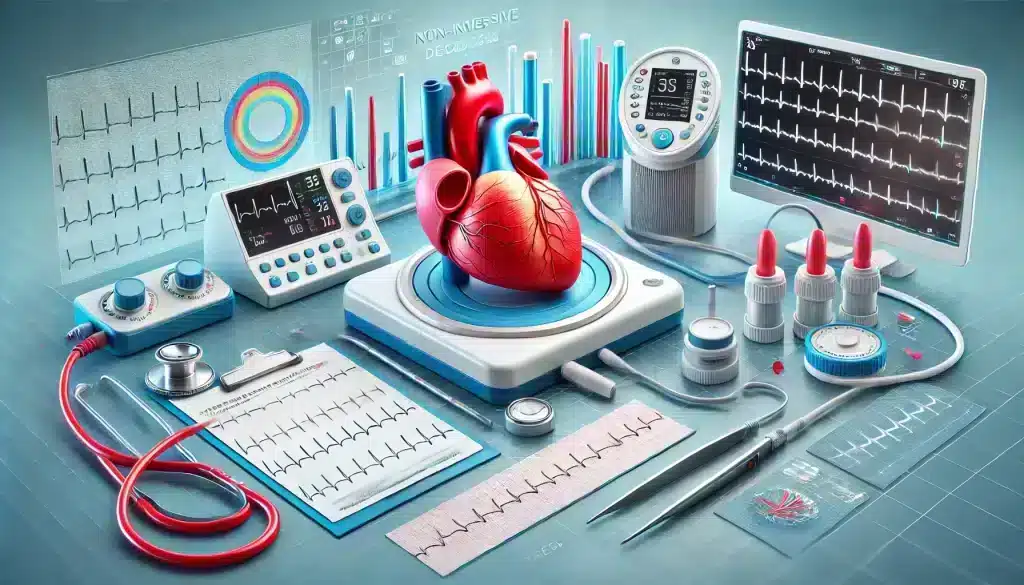
Many people are unaware they have coronary artery disease until they experience symptoms like chest pain or shortness of breath. However, regular check-ups and proactive screening, especially if you are at higher risk due to family history or other risk factors, can help detect the disease in its early stages. Early detection allows for lifestyle changes and treatments that can slow the progression of CAD.
Non-Invasive Diagnostic Tests for CAD
Several non-invasive tests can help diagnose coronary artery disease before symptoms become severe. These tests are often performed during routine check-ups, especially for individuals at higher risk. Some of the most common non-invasive diagnostic tools include:
- Electrocardiogram (EKG): This test measures the electrical activity of the heart and can detect abnormalities that may indicate blocked or narrowed arteries.
- Stress Test: A stress test monitors your heart rate and blood pressure during physical activity, typically on a treadmill, to assess how well your heart functions under stress.
- Echocardiogram: This ultrasound test provides images of the heart’s structure and function, helping to detect issues with blood flow and valve function.
Invasive Diagnostic Procedures for CAD
In some cases, more advanced diagnostic procedures may be necessary to get a clearer picture of the condition of your coronary arteries. These invasive tests are often recommended when non-invasive tests suggest potential problems or when symptoms are more severe. The most common invasive diagnostic procedure for coronary artery disease is a coronary angiogram.
Coronary Angiogram: This procedure involves injecting a special dye into the coronary arteries through a catheter to visualize blockages or narrowing in the arteries. The test is performed under X-ray guidance and provides detailed images of the blood vessels, allowing doctors to determine the severity of the blockage.
Diagnostic Tests Table
Below is a summary table of the common diagnostic tests used to detect coronary artery disease early:
| Non-Invasive Tests | Invasive Tests |
|---|---|
| Electrocardiogram (EKG) | Coronary Angiogram |
| Stress Test | |
| Echocardiogram |
Diagnosing coronary artery disease early can be lifesaving. Whether it’s through non-invasive tests or more advanced procedures like angiograms, early detection can lead to timely interventions, such as medications, lifestyle changes, or even surgery if necessary. Don’t wait until symptoms become severe; if you are at risk, talk to your doctor about scheduling these diagnostic tests.
Preventive Measures to Take
Prevention is key when it comes to managing coronary artery disease (CAD). While some risk factors like age and family history cannot be changed, many aspects of your lifestyle can be modified to reduce your risk. By adopting heart-healthy habits, you can significantly lower the chances of developing CAD or slow its progression if you have already been diagnosed. The earlier you take preventive measures, the better your chances of maintaining good heart health over time.
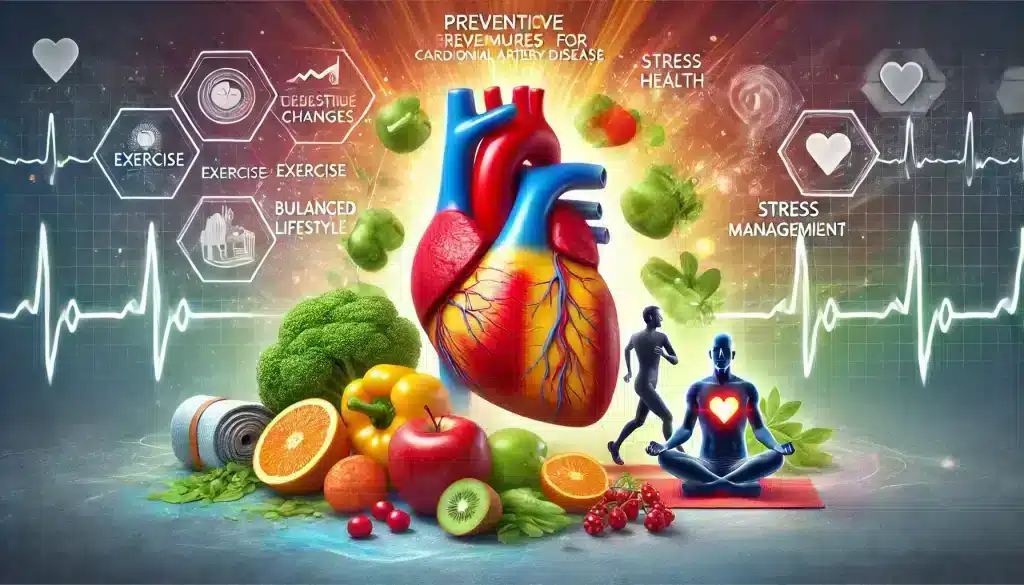
Preventive measures focus on controlling the risk factors associated with coronary artery disease. These include eating a balanced diet, staying physically active, avoiding smoking, and managing stress. By making these changes, not only can you prevent coronary artery disease, but you can also improve your overall health and well-being.
Heart-Healthy Diet and Its Role in Prevention
One of the most effective ways to prevent coronary artery disease is by maintaining a heart-healthy diet. This means reducing your intake of saturated fats, trans fats, and cholesterol, which contribute to the buildup of plaque in your arteries. A heart-healthy diet includes:
- Fruits and vegetables: Rich in vitamins, minerals, and antioxidants, they help protect the heart and reduce inflammation.
- Whole grains: High in fiber, whole grains help lower cholesterol levels and improve overall heart health.
- Lean proteins: Opt for sources like fish, chicken, and legumes rather than red or processed meats.
- Healthy fats: Incorporate healthy fats like those found in olive oil, avocados, and nuts to support heart health.
By making these dietary changes, you can help reduce the risk of developing coronary artery disease and ensure your heart stays strong and healthy.
The Importance of Regular Exercise
Regular physical activity is essential for preventing coronary artery disease. Exercise helps keep your heart strong, lowers blood pressure, and improves circulation, all of which reduce the risk of plaque buildup in the arteries. The American Heart Association recommends at least 150 minutes of moderate-intensity aerobic activity each week, such as brisk walking, swimming, or cycling.

Regular exercise doesn’t have to be intense or time-consuming. Even small activities like walking during your lunch break or taking the stairs instead of the elevator can make a big difference. The key is consistency. By staying active, you can improve your heart health and reduce the likelihood of developing coronary artery disease.
Stress Management and CAD Prevention
Chronic stress can contribute to the development of coronary artery disease by increasing blood pressure and heart rate. Learning to manage stress is a crucial preventive measure. Techniques like meditation, deep breathing exercises, and yoga can help you stay calm and lower stress levels.
Incorporating stress-relief practices into your daily routine can be as simple as setting aside a few minutes each day for relaxation or engaging in hobbies you enjoy. Managing stress is not only important for your heart but also for your overall mental and physical well-being.
Key Preventive Measures Table
A summary of key preventive measures for coronary artery disease is provided below:
| Preventive Measure | Benefits |
|---|---|
| Heart-Healthy Diet | Reduces cholesterol, lowers blood pressure, prevents plaque buildup |
| Regular Exercise | Strengthens heart, improves circulation, lowers blood pressure |
| Stress Management | Reduces heart rate, lowers blood pressure, promotes relaxation |
| Quit Smoking | Improves lung function, reduces risk of CAD, lowers cholesterol levels |
Taking preventive measures today can have a profound impact on your long-term heart health. Whether it’s by improving your diet, staying active, or managing stress, you can significantly lower your risk of developing coronary artery disease. Don’t wait for symptoms to appear—start taking control of your heart health now.
When to Seek Immediate Medical Help
Coronary artery disease (CAD) can develop slowly, but there are times when symptoms indicate a more serious issue that requires immediate medical attention. Knowing when to seek emergency help can be the difference between life and death. Certain warning signs should never be ignored, as they may signal a heart attack or other severe complications related to coronary artery disease.
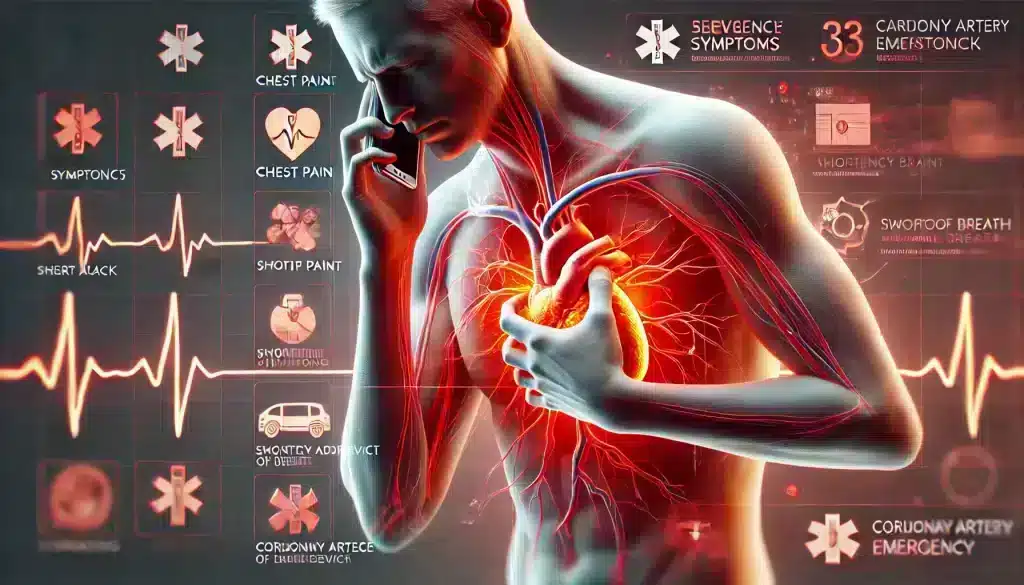
It’s important to recognize that while some symptoms of coronary artery disease may be mild and manageable, others require swift action. If you experience chest pain that lasts for more than a few minutes, extreme shortness of breath, or sudden weakness, you should seek medical care immediately. These symptoms can indicate that blood flow to the heart has been critically reduced or completely blocked, leading to a life-threatening situation.
Key Symptoms That Require Immediate Attention
If you notice any of the following symptoms, you should contact emergency services without delay:
- Severe chest pain: Persistent or intense chest pain, often described as a crushing sensation, that doesn’t improve with rest could be a sign of a heart attack.
- Shortness of breath: Difficulty breathing, especially if it comes on suddenly, can indicate that your heart is struggling to pump blood efficiently.
- Pain in other areas: Pain or discomfort that radiates to the arms, neck, jaw, or back, especially if combined with chest pain, may also signal a heart attack.
- Fainting or dizziness: Feeling lightheaded or fainting can be a sign that your heart is not getting enough oxygen-rich blood.
- Cold sweats: Unexplained sweating, particularly in combination with other symptoms, may indicate a heart problem.
What to Do in an Emergency
If you or someone around you experiences any of these symptoms, it’s important to act quickly. Call emergency services right away. Don’t wait to see if the symptoms subside on their own, as delays in treatment can result in serious damage to the heart muscle or even death.
While waiting for help to arrive, try to stay calm. If possible, sit or lie down to avoid overexerting your heart. If you have been prescribed nitroglycerin for chest pain, take the recommended dose while you wait. If the person is unconscious and not breathing, performing CPR can be lifesaving until medical professionals arrive.
Signs Table: When to Seek Help
The following table summarizes key symptoms that require immediate medical attention and what they could indicate:
| Symptom | Possible Cause |
|---|---|
| Severe chest pain | Heart attack or unstable angina |
| Shortness of breath | Heart attack or heart failure |
| Pain radiating to arms, neck, jaw, or back | Heart attack |
| Fainting or dizziness | Arrhythmia or heart attack |
| Cold sweats | Heart attack |
Recognizing the early symptoms of coronary artery disease and knowing when to seek immediate help can be lifesaving. Never ignore serious warning signs. If you feel something isn’t right, it’s better to be cautious and get medical attention. Early intervention can prevent further damage to your heart and improve your chances of recovery.
Conclusion
Coronary artery disease (CAD) is a serious condition, but with early detection, preventive measures, and timely medical intervention, it is possible to manage the disease and significantly reduce the risk of severe complications such as heart attacks. Understanding the early symptoms, recognizing the risk factors, and adopting a heart-healthy lifestyle can make all the difference in preventing or slowing the progression of coronary artery disease.
If you have risk factors for CAD, such as high blood pressure, high cholesterol, diabetes, or a family history of heart disease, it’s essential to stay proactive. Regular check-ups, diagnostic tests, and making lifestyle changes, such as eating a healthy diet, exercising, and managing stress, are key steps in maintaining heart health. Don’t wait for symptoms to worsen—taking action now can help protect your heart for years to come.
Remember, your heart health is in your hands. By staying informed, listening to your body, and working with your healthcare provider, you can live a full and active life even with coronary artery disease. If you ever experience symptoms like chest pain, shortness of breath, or extreme fatigue, don’t hesitate to seek medical help. Your heart deserves the best care, and the choices you make today can ensure a healthier tomorrow.
FAQ (Frequently Asked Questions)
1. What is coronary artery disease?
Coronary artery disease (CAD) occurs when the arteries that supply blood to the heart become narrowed or blocked due to plaque buildup, which can lead to chest pain, shortness of breath, and even heart attacks.
2. What are the early warning signs of coronary artery disease?
The early warning signs of coronary artery disease include chest pain (angina), shortness of breath, unusual fatigue, and pain that radiates to the arms, neck, jaw, or back.
3. Can coronary artery disease be prevented?
Yes, coronary artery disease can be prevented by adopting a heart-healthy lifestyle, such as eating a balanced diet, exercising regularly, avoiding smoking, and managing stress.
4. Who is at risk for coronary artery disease?
Risk factors for coronary artery disease include smoking, high blood pressure, high cholesterol, diabetes, obesity, family history of heart disease, and age (men over 45 and women over 55 are at higher risk).
5. How is coronary artery disease diagnosed?
Coronary artery disease can be diagnosed through various tests, including an electrocardiogram (EKG), stress tests, echocardiograms, and coronary angiograms.
6. What should I do if I experience chest pain?
If you experience persistent or severe chest pain, especially if it radiates to other areas like your arms or jaw, you should seek immediate medical attention as it could be a sign of a heart attack.
7. How can I lower my risk of developing coronary artery disease?
You can lower your risk by quitting smoking, eating a heart-healthy diet, exercising regularly, managing your weight, controlling your blood pressure and cholesterol levels, and reducing stress.
8. What lifestyle changes should I make to improve heart health?
To improve heart health, focus on eating more fruits and vegetables, incorporating lean proteins and healthy fats, exercising regularly, reducing stress, and avoiding tobacco and excessive alcohol consumption.
9. Is coronary artery disease reversible?
While coronary artery disease cannot be fully reversed, its progression can be slowed or stopped with proper treatment and lifestyle changes, including medication, a healthy diet, and regular exercise.
10. What is the difference between angina and a heart attack?
Angina is chest pain caused by reduced blood flow to the heart, often triggered by physical activity or stress, while a heart attack occurs when blood flow is completely blocked, causing damage to the heart muscle.
11. How often should I get checked for coronary artery disease?
If you have risk factors for coronary artery disease, it’s important to have regular check-ups, especially as you age or if you experience any symptoms like chest pain or shortness of breath.
